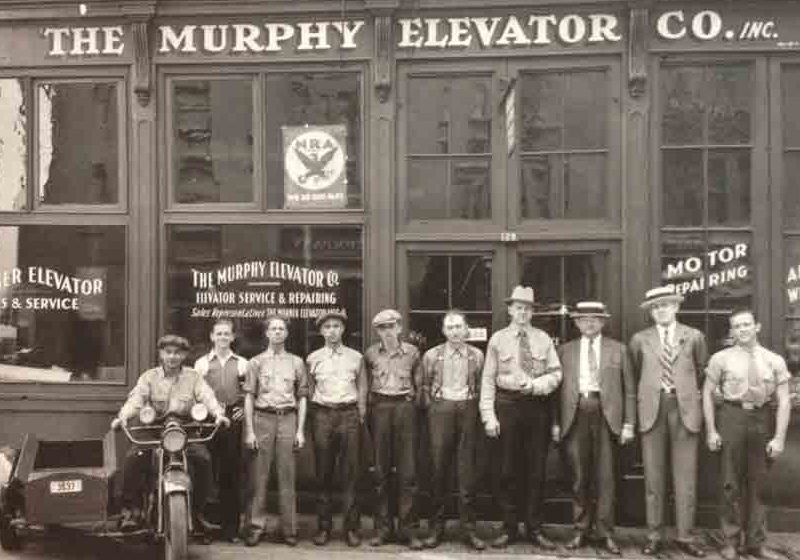An announcement by the National Elevator Industry, Inc. (NEII) to reaffirm building owners and the riding public of the measures the industry undertakes to provide quality safety standards
submitted by NEII® The following announcement was recently received from NEII. . . . Editor
In light of recent tragic and highly publicized accidents that have occurred in the U.S., the National Elevator Industry, Inc. (NEII®) feels it is important to reaffirm for building owners and the riding public the many measures our industry undertakes to provide a consistently high standard of safety.
Safety is the elevator and escalator industry’s first priority. NEII and its member companies are committed to the promotion of safe building transportation and continue to aggressively work toward improving and ensuring adoption of stringent safety codes, developing safer products and helping to educate the public on safe riding practices. While no system can ever be failsafe, we strongly believe that accidents such as these should never happen, and that it is our responsibility — from manufacturers, owners, managers and inspectors to the riding public – to uphold this overall commitment to safety.
The industry does have stringent codes in place to help ensure the safety of its products, and to make certain that machinery is maintained and inspected according to its respective codes.
Basic protections from elevators moving while their doors are open have in fact been in place since the 1920s. These simple electromechanical systems became what are known as “interlocks” in later elevator codes, and exist on virtually all elevators in operation in the US today. To better protect the passenger from possible harm, the 1980 ASME A17.1 Code implemented a provision that would lock the elevator doors (door restrictors) when the car was more than 18 inches above or below the floor.
Since the 2000 edition of the ASME A17.1 for new elevator installations, the industry has incorporated the latest advances in technology, making additional protection possible and providing redundant protections against unintended elevator car movement. Elevators installed under the 2000 and later editions of the code contain these safety features:
- A means to detect unintended car movement with the doors open due to a failure in the drive machine, motor, brake, gearing, control system, hydraulic pressure, etc. that will immediately stop the car;
- An independent, secondary emergency brake that is activated when unintended car movement is detected;
- Application of this brake when a loss of power is detected; and
- A requirement that the emergency brake be manually reset before the car is permitted to run again, requiring a qualified elevator mechanic to diagnose and correct the problem before the elevator is placed back in service.
For those elevators that predate the safety features introduced in the past 20 years, the Safety Code for Existing Elevators and Escalators, ASME A17.3 contains basic requirements for rider safety in these older systems. These include requiring door restrictors and prohibiting the driving machine that moves the car from operating with passengers on the car if the elevator doors are not in a closed position. NEII has consistently advocated the adoption of the ASME A17.3 within every jurisdiction nationally, to ensure that a designated minimum standard of safety is met, regardless of the age, model or manufacturer of the equipment. Unfortunately, ASME A17.3 has been adopted in few US jurisdictions to date.
As with any electrical/mechanical system, it is critical that elevators be inspected and maintained on a regular basis to ensure that these safety features are functional. The ASME A17.1 Safety Code for Elevators and Escalators prescribes regular maintenance and periodic testing and inspection for all elevators. Of course, their success relies on building owners that retain adequate elevator maintenance, elevator contractors and technicians that are proficient in their work, and jurisdictions that require qualified elevator inspectors to help ensure the safety of the equipment. Proper preventive maintenance plays a critical role in eliminating the potential for equipment malfunctions and addressing any prospective difficulties.
Unfortunately, accidents can still occur even with all of these measures and the protections contained in our safety codes. This is why the NEII member companies remain committed to developing new technology to further enhance passenger protection in both new and old elevators. NEII remains a strong advocate of elevator and escalator safety by continually improving the systems in place to help ensure rider safety, endorsing the adoption of current model codes by local government agencies, and assisting our national and international code-writing bodies in the improvement of rules that affect the installation, maintenance and operation of this equipment.
As elevator technology continues to evolve, these safety codes also encourage the efficient and safe adoption of the latest technical developments, resulting in elevator equipment that remains on the leading edge of safety, innovation and reliability.
Though elevators are one of the safest forms of transportation with over 18 billion passenger trips per year in the United States alone, following simple guidelines can help further improve passenger safety. It’s important to not only know how to properly ride elevators, but also what to do if the elevator becomes stalled. We encourage everyone to review these guidelines regularly for more information on these topics. Please visit the elevator and escalator safety pages on the NEII website at www.neii.org.
About NEII
National Elevator Industry Inc. (NEII) is the premier national trade association representing the interest of firms that install, maintain and/or manufacture elevators, escalators, moving walks and other building transportation products, including parts or components. NEII promotes safe building transportation for new and existing products and technologies, and works with various organizations on the formation, adoption and enforcement of the latest building transportation codes and standards. NEII membership includes the major elevator companies in the United States, if not the world. NEII offers Regular, Trust and Individual memberships. NEII and the NEII logo are registered trademarks of the National Elevator Industry, Inc. For more information about NEII, please visit www.neii.org.
Get more of Elevator World. Sign up for our free e-newsletter.









